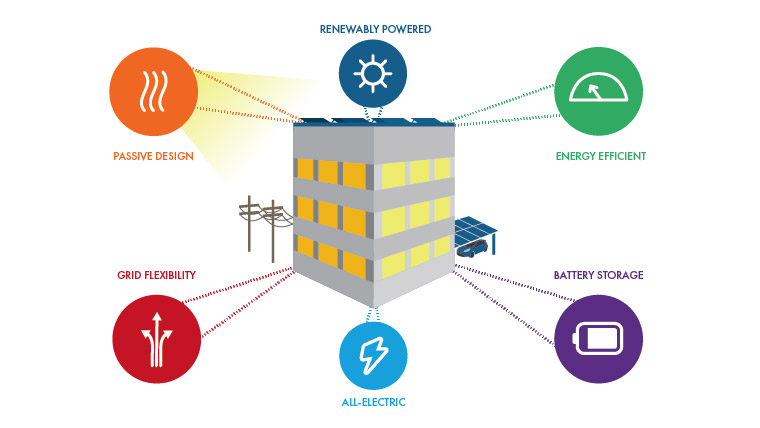Since my first net zero project in 2007, I have witnessed the growing interest of facility owners in reducing energy and carbon consumption towards net zero goals. As I talk more and more with them, I realize that facility owners who once thought net zero energy or carbon was out of reach are now finding it a fit.
However, some hesitancy still persists, and I mapped the most common questions I regularly face about net zero and efficient buildings.
Let’s review the state of net zero.
Is now the right time to pursue a net zero energy or carbon building project?
Current supply-chain issues aside, now is a great time to pursue a project with net zero energy or carbon performance. The architectural, mechanical, electrical and renewable technologies needed to achieve net zero performance are no longer leading edge and are instead “state of the shelf.”
More importantly, there is a misconception that building occupants need to change their behaviors or expectations of a net zero facility. That is not accurate at all. Instead, they can experience improved environmental comfort and enjoyment from a performance-informed design and support during occupancy.
What if I wait for a code mandate for net zero energy or carbon building?
Codes are moving to adopt net zero energy and carbon performance in the near term in locations such as California and my hometown of Denver, Colorado.
Pursuing net zero energy or carbon performance in advance of code requirements is an opportunity to achieve performance that is a differentiator and build a track record of success before the mandate.
The electric grid is getting greener. Is net zero energy or carbon for my project important?
The most cost-effective new electric generation is either utility-scale wind or wind with energy storage, which is a constant source of optimism for me. However, it will be decades before coal and natural gas generation sources are replaced with renewable, carbon-free electricity at all hours of the year. Taking steps at both the building and utility scale to limit energy consumption and environmental impact is essential to turn the corner on greenhouse gasses and achieve decarbonization.
I understand the environmental benefit of a net zero facility. But what is the benefit for a building owner?
There is a significant benefit to establishing a clear, quantitative performance objective like net zero energy or carbon for your building that the design, construction and operations teams use to inform their actions.
You get a return on capital investments based on analysis through performance-informed design. You also get support for operations to validate that the actual performance meets the design intent, lowering the risk of energy cost and occupant dissatisfaction.
We will build net zero into the functioning facility. The process starts by assessing operations, incorporating passive strategies, layering on selections for load reduction, energy efficiency and renewable energy, implementing through construction execution and finally validating the actual performance of the operating building.
What are the technical obstacles to achieving a net zero energy or carbon building?
There is still a limitation in the marketplace for large-scale electric heat pump water heaters for applications such as swimming pools and domestic hot water for hotels. Products are available for these applications but can be prohibitive in both physical size and first cost. However, the market is anticipated to close this gap in just a few years.
While net zero energy and carbon buildings are not necessarily limited to all-electric buildings, all-electric buildings are well-positioned for the future to adopt electrical grid flexibility and energy storage strategies.
How about cost?
Our clients have found that the building capital cost is about the same as a project without net zero energy or carbon goals. You may have more design costs up front as we use a performance-informed design approach to test technologies and investments compared to a traditional design approach.
And if renewable energy has not been budgeted for a project, this could be an increased cost. But our work with clients has demonstrated best practices through Capital expenditure (CapEx) and Operational expenditure (OpEx) strategies to achieve the goal.
Achieving net zero energy or carbon comes down to implementing the right design, construction and operations process, which is embedded in contractual requirements. Setting your building project up for success with a robust contract is the single most crucial step to achieving net zero energy or carbon building.
There is no “right time” for implementing a net zero energy or carbon facility, yet I am excited that the current technology, industry experience and the growing number of energy-efficiency code mandates make this transition towards net zero facilities much more accessible.



